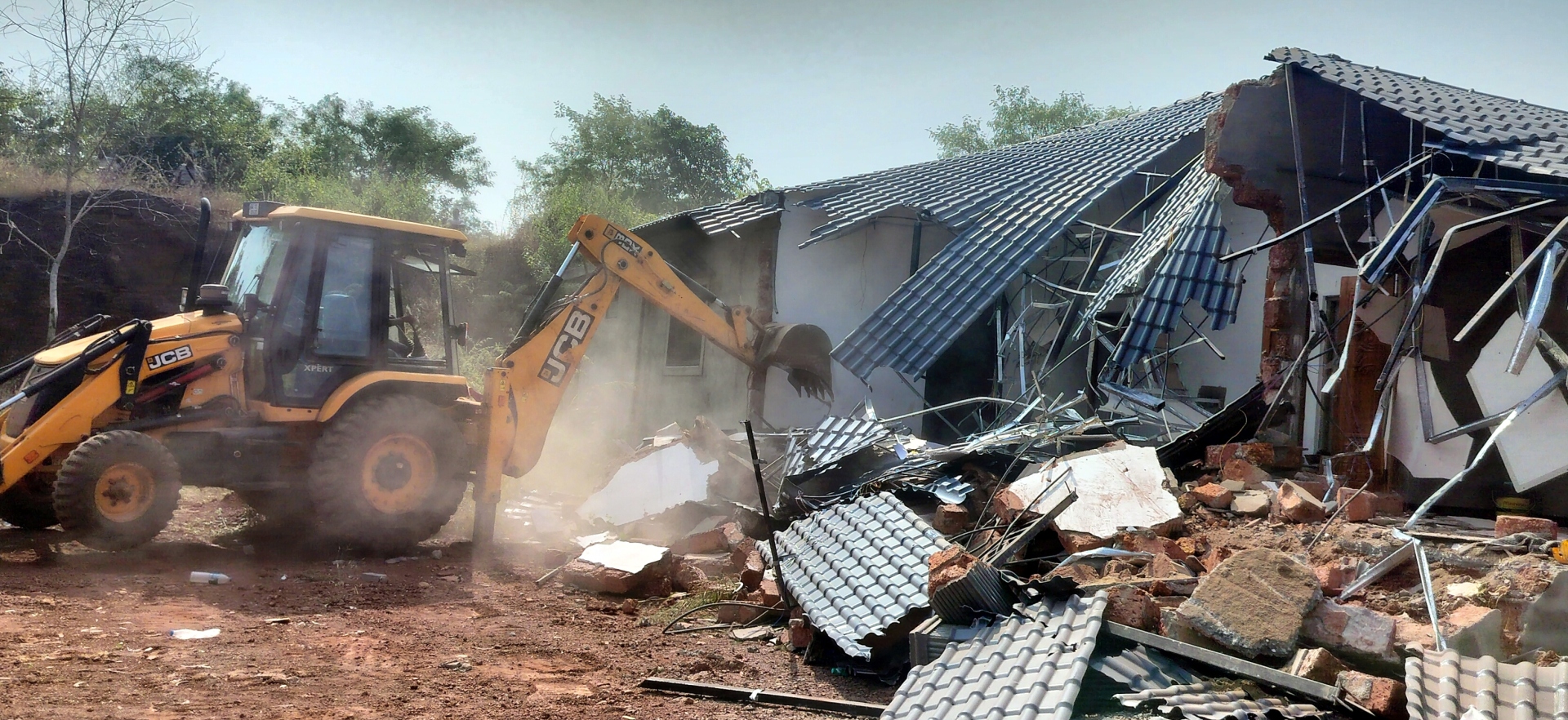State walks a legal tightrope as HC pushes for action on encroachments

District Collectors have activated taluka-level flying squads to target unauthorised development as judicial pressure mounts.
PANAJI
Illegal structures and how the State has tackled the problem have once again come to the fore, with the Bombay High Court at Goa recently castigating the State government and directing it to come up with a plan to deal with it, a couple of weeks ago.
On a sticky wicket following the judgement, Chief Minister Pramod Sawant has attempted a balancing act, on one hand throwing the weight of his government behind some of those affected by the High Court verdict, saying a new law to protect them is being contemplated, while on the other, getting his administration, including both the district collectors, to take swift steps to tackle encroachments and illegalities in road widening areas.
In fact, the Collectors have already acted on one of the directions contained in the High Court judgement – setting up additional flying squads to take swift action against illegal land development and construction activity.
At least in South Goa District, the Collector's office has set up taluka-level flying squads and even assigned a separate WhatsApp number to each of them so that the public can report, through messages of up to 30 words and a picture, any illegal activity such as unauthorised construction, illegal land-filling or hill cutting.
New legislation
No one in the government, not even Sawant himself, was willing to throw light on the nature of the new legislation which the government intends to come up with to grant protection to some of those affected by the judgement.
The only hint that the Chief Minister gave was the possible legal avenue before the government of making a distinction between "illegal" and "irregular" structures.
However, more than saying that this "illegal" and "irregular" distinction has to be made in light of the High Court judgement directing his government to act, Sawant has refused to define what this distinction will be.
“We are examining the order. We are working it out. Our legal team is on the job working on a legislation, if necessary, to protect the rights of the affected people," Sawant told *The Goan*.
Protecting illegal structures with legislation failed in past
Attempts in the past by governments to protect illegal structures, especially on Communidade lands, had either failed the test of judicial scrutiny or had to be abandoned following public uproar.
Early at the start of the current millennium, the then government of the late Manohar Parrikar had amended the Code of Communidade to regularise encroachments and structures built before a cut-off date of June 15, 2000. Many Communidades revolted against the move and challenged it before the same Bombay High Court, and succeeded.
Again, in 2012 and 2017, Parrikar's governments attempted to legalise the encroachments on Communidade land. The government of Sawant too made an attempt in 2021. But all these efforts proved futile in the face of resistance from the comunidade managing committees.
Another attempt to grant legal sanctity to clusters of illegal and haphazard settlements through the "Bhumiputra Bill", which was passed in the Goa legislative assembly, had to be aborted. Following a major hue and cry from the general public, the Sawant government backtracked and allowed the bill to lapse by not sending it for consent to the Governor.
When it's a 'home', law views it differently: Law officer
Since the suo motu PIL on which the High Court issued the judgement is still pending and has not yet been fully disposed of, no bureaucrat was willing to come on record about the nature of the new legislation the government is contemplating to protect some of the illegal structures.
A top law officer, however, said that a distinction needs to be made between structures where families live, which are their "homes", and others which are used for commercial and other non-residential purposes.
"You cannot throw the baby along with the bathwater out. Even the law views 'homes' and other structures differently. Shelter is a basic need and right. People do everything in their capacity to build and own a house with a roof over his and his family's head. Many times it takes them a lifetime to achieve success. You can't just demolish them. Illegalities can be cured. We will have to work out a way and present it to the court," a top law officer said on the condition of anonymity, citing the sub judice nature of the matter.
The High Court judgement of March 6 itself makes this distinction, dividing 'illegal constructions' into five categories in its directions to local bodies (panchayats and municipalities) to act: illegal constructions on roadsides or major roads in municipal areas; those in panchayat areas; illegal constructions in panchayat areas being used for commercial purposes; those in municipal areas; and the fifth category of illegal constructions in paddy fields.
Single lawyer for all panchayats: CM
Chief Minister Pramod Sawant said his government was working on a strategy to bring all panchayats on the same page and be represented by one or two lawyers so that there is uniformity across the State.
"We are working on getting all the 190-odd panchayats to be represented by one or two lawyers. Otherwise, there will be complete confusion in what is presented to the High Court by the local bodies," Sawant said.